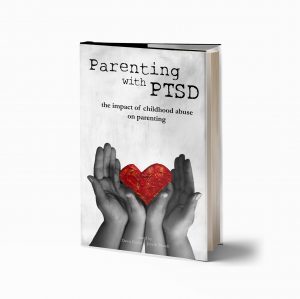The Adverse Childhood Experiences study was ground-breaking in its recognition that childhood trauma impacts individuals across their lifespan. This was the big take-away, that adults are living with unrecognized and thus untreated physical, mental and emotional consequences that have massive detrimental impacts on their quality (and quantity) of life.
And yet, when we see the research and programming that has been implemented following the ACE study, the consensus seems to be that the effort and expense involved in treating those adults is just too much to expend. The majority of efforts are focused on prevention or early childhood intervention rather than treatment of the traumatized adult. And so the conversation about ACEs revolves around children, not around the adults from whom this study originated.
Further, when the traumatized adults are referenced at all, it is as a supportive player in the child’s story, or as researchers put it, the adult’s role is to be an effective “buffer” for children. When looking at the traumatized adult, support and treatment for them is seen as valid only insofar as it relates to their child’s well-being, not as having value in and of itself.
I often read complaints by those who are working to forward the integration of ACEs science into health care that they are frustrated by the “silo” effect, with each physical and mental health specialty working separately instead of in coordination to address the impacts of trauma.
It seems to me that the missing picture here is that we are not just silo-ing our treatment, we are silo-ing those we are treating. When we are talking about Adverse Childhood Experiences, we are talking about inter-generational trauma. We are talking about families. And yet what I see in the programs that are being created, and the research that is being done, is a child-centered focus. The mother, when mentioned, only exists to “buffer” the child, and the father does not exist at all.
Where is the whole-family approach? I see glimpses of it in discussions about child-parent psychotherapy, but then I see that the goal of this therapy is “returning the child to a normal developmental trajectory”. Returning the child? What about the parent? What is the goal for the parent in this scenario? Is their development irrelevant? If we are truly engaged in creating trauma-informed systems change, we need to be engaged from a whole family framework. ALL the traumatized people matter.
Further, all the systems that perpetuate trauma matter. If we are not looking at creating change from an intersectional, social justice informed framework, we are just spouting the same bullshit that the privileged upper class have been spouting for eons, about how those poor mothers are responsible for all the evils of the world. We must acknowledge the systems of oppression that lead to inter-generational trauma. Then we must tear those systems down, and re-build. I am encouraged to see a new framework arising in this area which recognizes the Pair of Aces: Adverse Childhood Experiences, and Adverse Community Environments.
We must also acknowledge that adverse childhood experiences do not only exist in impoverished communities, they exist in all communities. The original ACEs research came from a group that was for the most part, Caucasian and middle class. What this shows us is that the systems we live in are not just harmful to the oppressed, they are harmful to all. This does not mean that we ignore systemic oppression and discrimination. It does mean we acknowledge the pair of ACEs, Adverse Childhood Experiences and Adverse Community Environments, and how they are intertwined, while still acknowledging that childhood trauma is a universal issue.
When we are creating systems to address trauma, we need to ensure that we are not profiling a certain demographic and only creating change in the systems that serve that demographic. We need to be creating change in all systems. What does this mean? This means instituting a trauma informed framework in the inner-city school and the private school. This means educating social workers and business leaders about creating trauma informed workplaces.
We need to zoom out the lens we are using to view Adverse Childhood Experiences. Firstly, to the whole family system, and then, to the systemic discrimination that perpetuate violence and oppression. We can’t solve this complex issue unless we acknowledge the universal nature of childhood trauma, and see that ACEs touch every family and every community.
This article first appeared on ACEs Connection
About the Author:
Joyelle Brandt is a feminist artist, author and speaker. She is the author/illustrator of the children’s books Princess Monsters from A to Z and One Act of Kindness, and co-editor of the anthology Parenting with PTSD, a groundbreaking collection of writing by parents who are survivors of childhood abuse. When she is not busy raising two rambunctious boys, she is most often found playing her guitar or covered in paint at her art desk. Follow her on Facebook, Twitter and Instagram for art and inspiration.
———————————————————————————————————–
Join the Parenting with PTSD newsletter
to get the first chapter of Parenting with PTSD for free!
———————————————————————————————————–

Yes. I’ve been trying to write my own version of this, because I’ve personally seen the ACES scale used in a way that is just re-traumatizing for those made to take it then profiled because of it. I’ll post it eventually, but it is totally in line with this.
LikeLike
Please share the article with us when you post it! i would love to share it on our Facebook page.
LikeLike